

Andrew Maclean
2025 Mahindra XUV 3X0 vs Chery Tiggo 4: Spec battle
1 Month Ago
The updated T-Roc is a subtle, but effective update that makes VW's sporty crossover as compelling as ever – just go easy on the options.

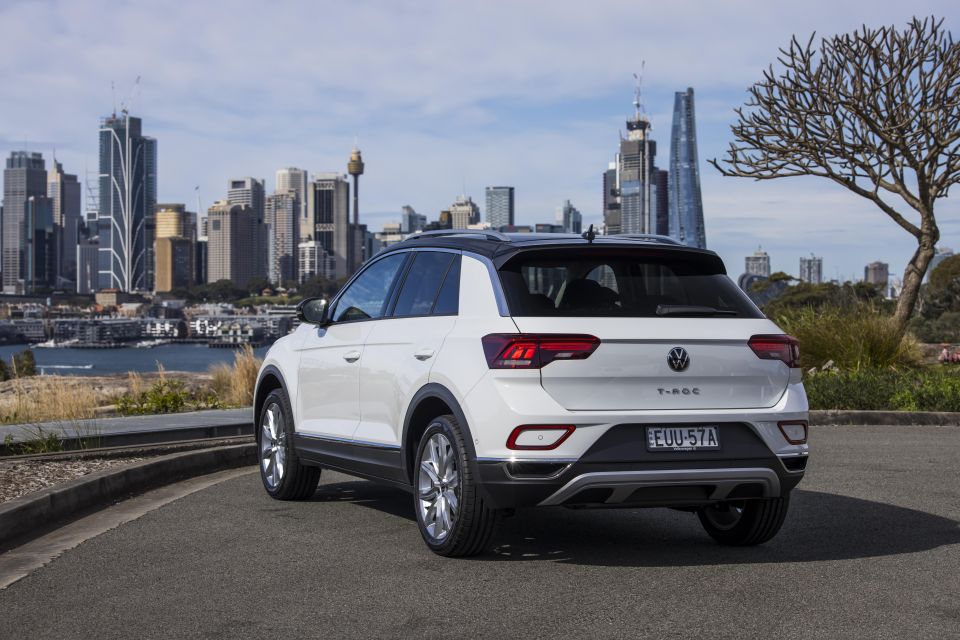

Quickly see how this car stacks up against its competition. Select any benchmark to see more details.
Where expert car reviews meet expert car buying – CarExpert gives you trusted advice, personalised service and real savings on your next new car.
The Volkswagen T-Roc may have been a late starter in Australia, but the mid-life refresh is launching not long after the rest of the world this time around.
It’s essentially a Golf (albeit a Mk7) on stilts, and has proven fairly popular with local buyers despite ongoing supply issues.
With this mid-life update, Volkswagen is aiming to address criticisms of the original by improving on its cheap-feeling cabin elements, and bringing the infotainment and assistance technology suite in line with its newer model lines.
Headlining the updated range is the local debut of the 221kW T-Roc R performance hero – but we can’t tell you about that until September 15, so stay tuned.
With an ever-growing segment of competitors, does the updated T-Roc make a case for itself as a premium-leaning compact crossover?

When pricing was announced four months ago, the T-Roc range kicked off at $37,250 before on-road costs for the Style and $45,250 for the higher-spec R-Line.
However, that’s for the initial allocation of 2022 model-year (MY22) vehicles. The incoming MY23 builds have some minor specification adjustments, and are slightly cheaper as a result.
Due to component shortages, Volkswagen has removed Side Assist (blind-spot) and Rear Traffic Alert systems for MY23, as well as the Proactive Occupant Protection System, which pre-tensions the seatbelts and closes the windows and sunroof if the vehicle detects a collision.
As a result, the T-Roc Style and R-Line are $650 cheaper. Volkswagen hopes to re-introduce these features as soon as they’re available, which could mean a running MY23.5 change in six months or so, otherwise it may have to wait for MY24 production later next year.
The flagship T-Roc R is unaffected by the above changes, though the incoming T-Roc R Grid Edition (due December) will forego the above assistance features in addition to some other spec adjustments to deliver its lower pricing.
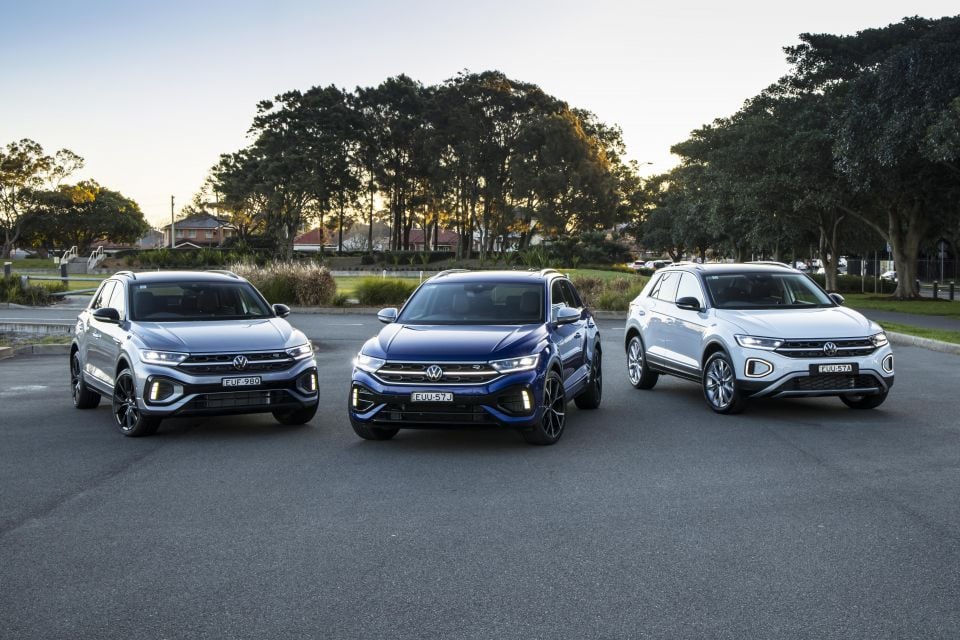
2023 Volkswagen T-Roc pricing:
Prices exclude on-road costs
Key rivals include:
Prices exclude on-road costs unless specified
MORE: 2023 Volkswagen T-Roc price and specs
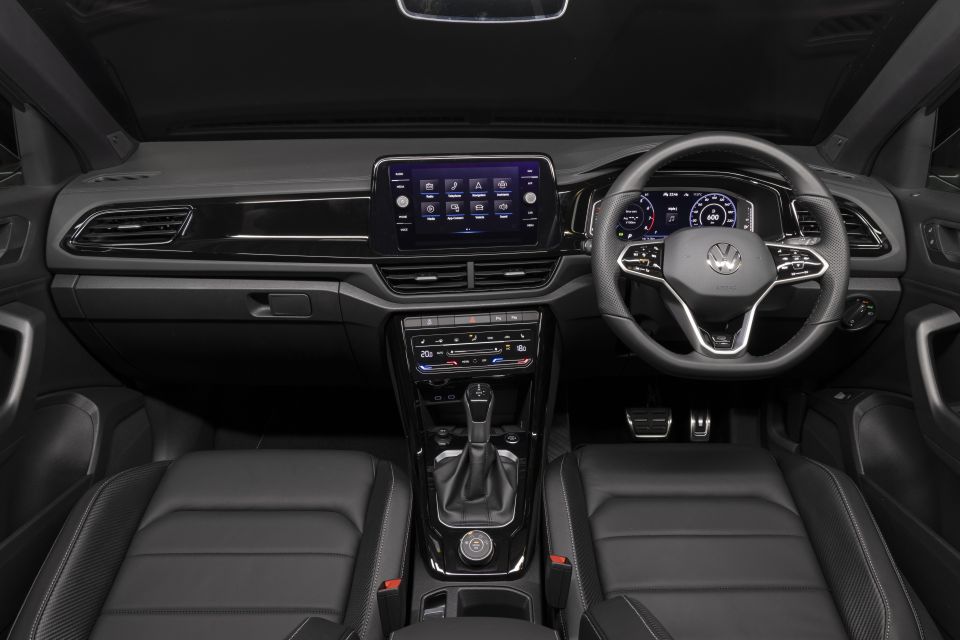
Arguably the most noticeable changes feature inside the cabin, where the T-Roc has been treated to a redesigned dashboard that appears to be inspired by the new Mk8 Golf.
There’s a new soft-touch dashboard covering (finally!), and the infotainment touchscreen now stands tall in a floating tablet-style arrangement which puts it in the driver’s line of sight. As before, an 8.0-inch touchscreen is standard.
Style versions get a basic system with no navigation and wired Apple CarPlay and Android Auto, while the R-Line gains embedded satellite navigation and wireless smartphone mirroring – this is optional on the Style as part of the Sound & Vision package.

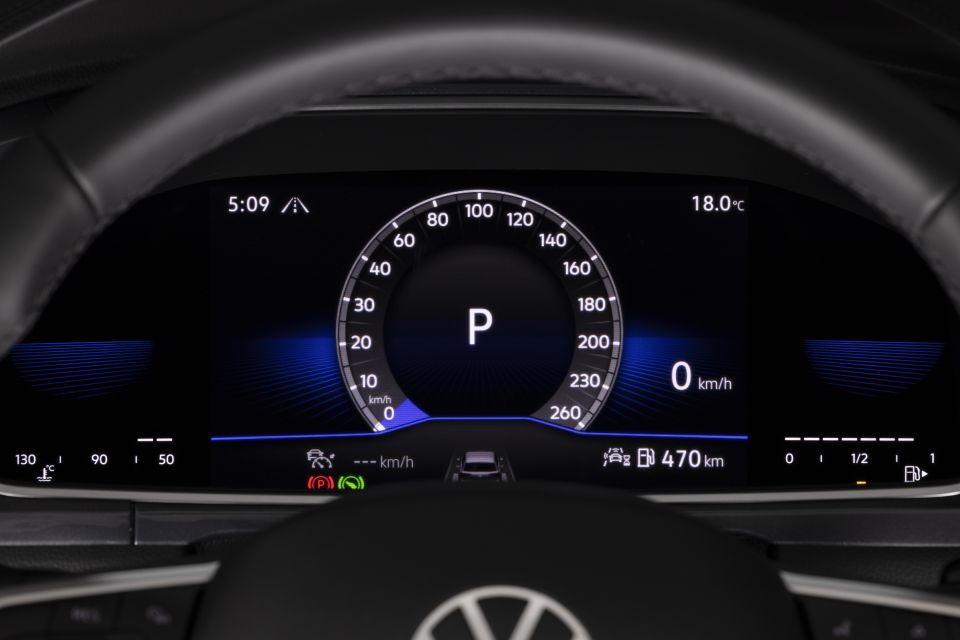

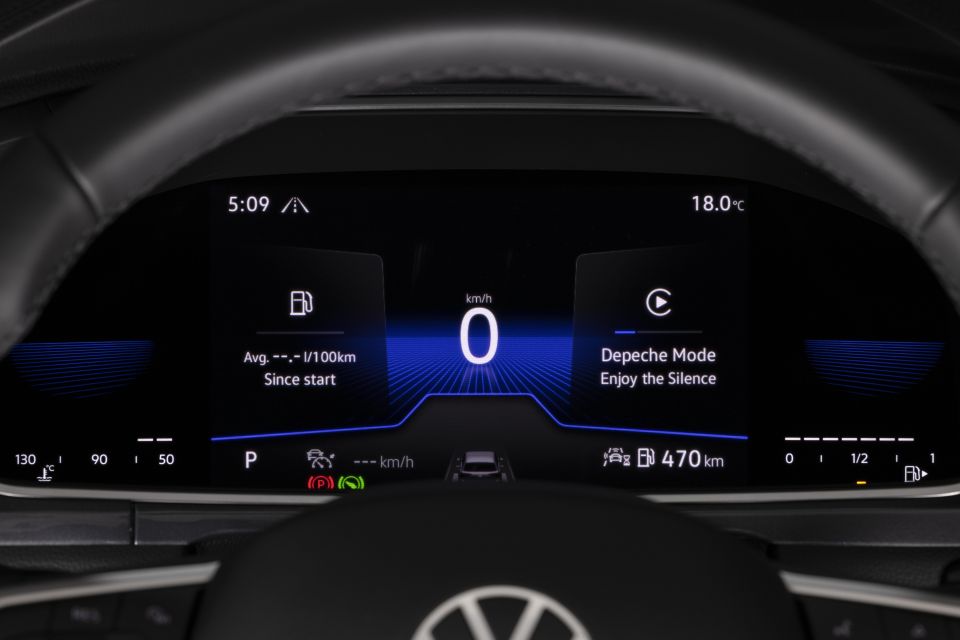
Ahead of the driver there’s a new steering wheel in both grades, featuring Volkswagen’s new chunky designs and in the case of the R-Line, touch-capacitive switchgear and perforated leather sections. Like we’ve noted in other reviews, they can be a bit fiddly and prone to fingerprints, but you get the hang of them eventually.
The Style also gets a version of Digital Cockpit as standard, though it’s a very basic 8.0-inch display with average resolution and configurability. This alone would lead me to spec the Sound & Vision pack to get the larger, clearer 10.25-inch Digital Cockpit Pro that’s standard on the R-Line.
Having the more sophisticated virtual instruments also allows for maps and navigation prompts to be projected into the display, which is helpful given there’s no head-up display option in the T-Roc.
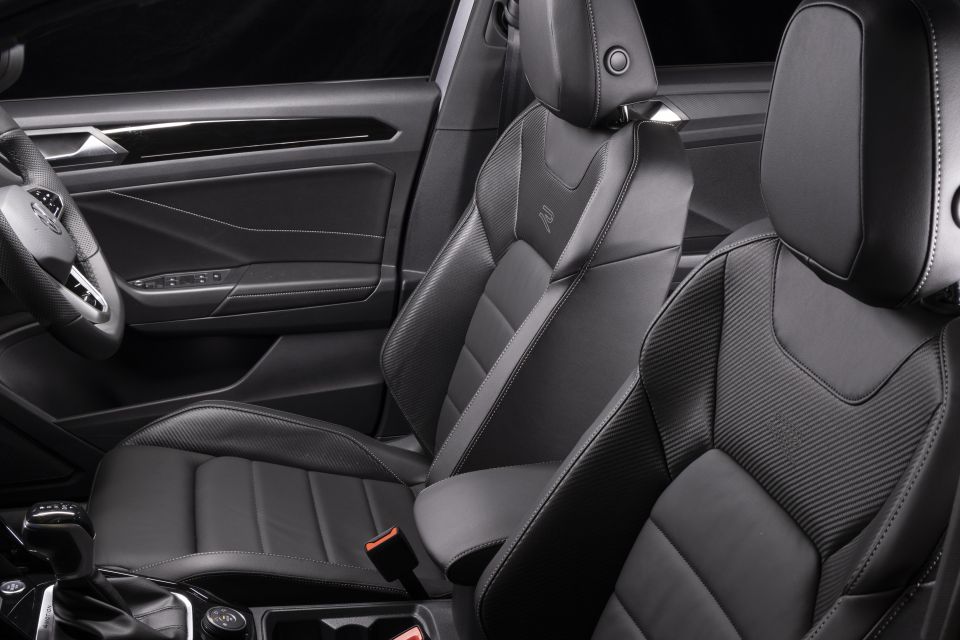
Front occupants are sat in Comfort Sport seats in the T-Roc Style and then more bolstered Sport seats in the R-Line, trimmed in microfleece as standard.
Opt for the optional Leather package brings Vienna-grade leather in the Style and more upmarket Nappa leather in the R-Line, as well as driver’s power adjustment and memory for both grades.
The optional Nappa seats in the R-Line look and feel fantastic, and are a worthy upgrade to enhance the cabin ambience.
Having driver’s seat power adjustment sweetens the deal, and it feels like these seats hug you in all the right places – they’re basically the same as the T-Roc R’s front pews.
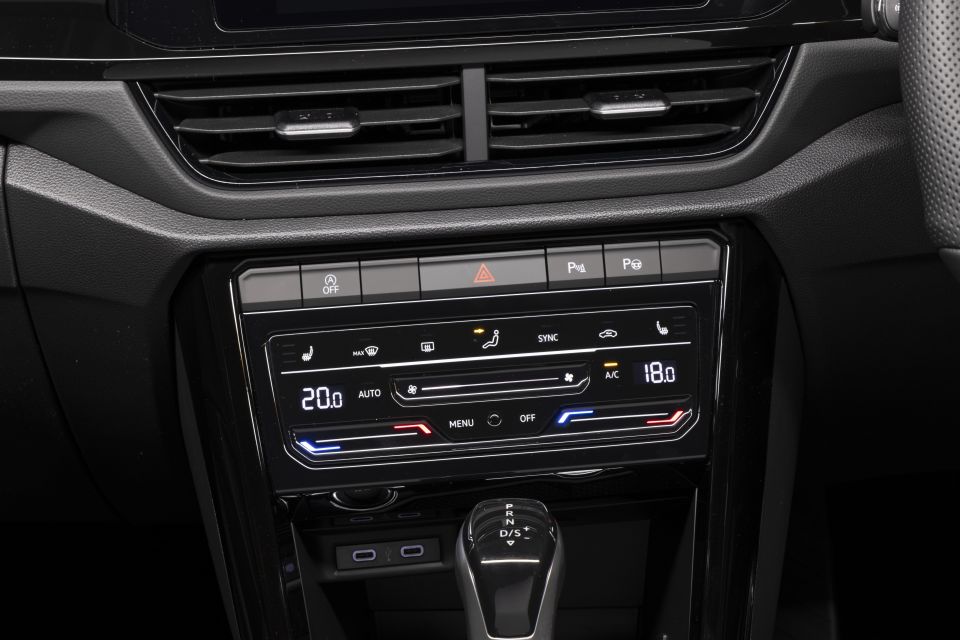

Other changes in the front row include the new climate controls, which use touch-capacitive controls and sliders like we’ve seen in the larger Tiguan, and a new chunkier gear shifter.
While the soft-touch dashboard material is a worthwhile update over the scratchy plastic of the pre-update model, the front doors retain harder-wearing plastics which are a bit disappointing especially when you’re paying optioned R-Line or full-fat R money – the Audi Q2, Cupra Formentor, Lexus UX and Mazda CX-30 all have more premium material choices.
Standard on both grades is a new wireless smartphone charger, which has a grippy rubberised lining and a phone-shaped groove to stop your device from sliding around, joined by USB-C ports under the centre stack.
It’s a handy update if you have a navigation-equipped model with wireless smartphone mirroring, but if you have the base Style with no Sound and Vision package you still need to plug your phone in for Apple CarPlay and Android Auto.
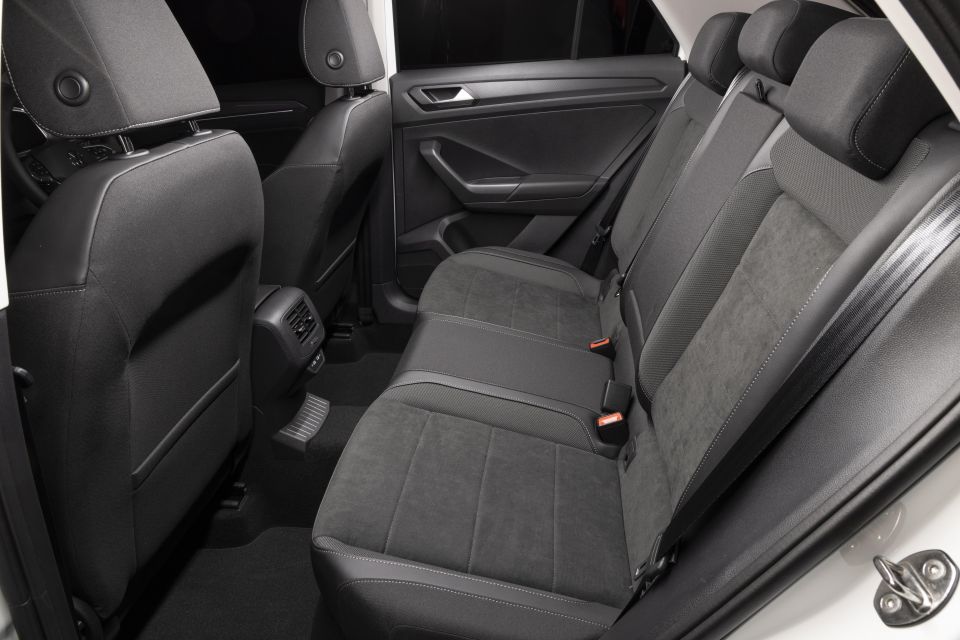
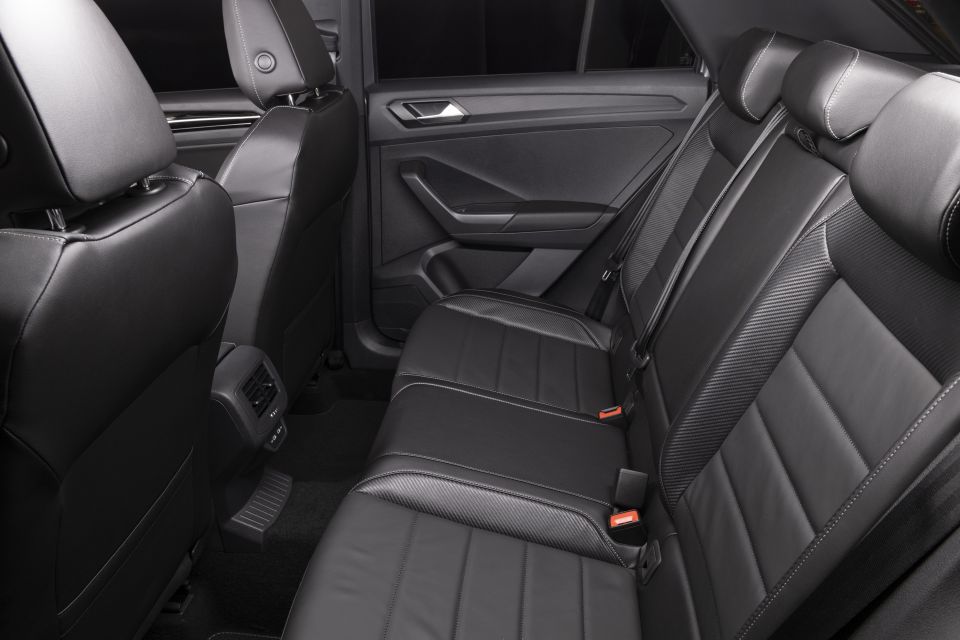
Being based on a Golf, the T-Roc’s second row is surprisingly accommodating despite its compact external dimensions.
At 6’1 I can comfortably fit behind my own driving position, and there’s sufficient amenities for kids and adults alike riding in the rear.
Directional air vents, rear map pockets, a fold-down centre armrest with cupholders, and twin USB-C ports mean the T-Roc’s second row is well featured for the class, while ISOFIX and top-tether points mean your little ones are catered for too.


Boot space is dependent on the variant you go for.
In the front-wheel drive T-Roc Style, quoted volume is 445 litres with the rear seats upright and 1290L with the second row pews folded. The all-wheel drive R-Line quotes slightly less with 392L/1237L.
The Style offers extra volume under the adjustable boot floor, whereas the R-Line’s all-wheel drive hardware eats into said space. Both models feature a space-saver spare wheel.
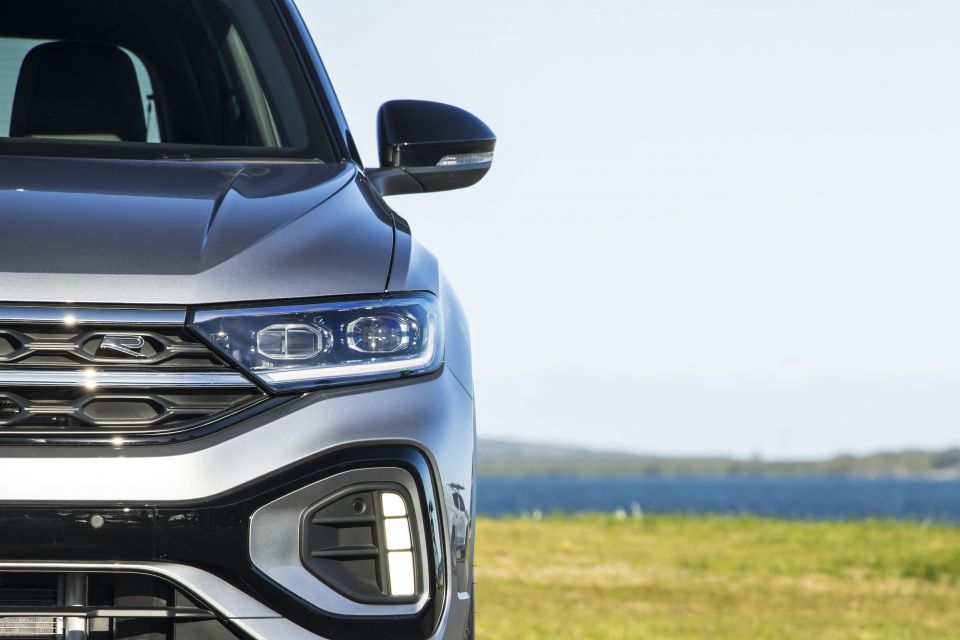
Power in the entry-level T-Roc Style comes from a carryover 1.4-litre turbocharged petrol engine generating 110kW (5000rpm) and 250Nm (1500-3500rpm).
The EU6-rated powertrain features idle stop/start and brake energy recuperation, driving the front wheels via an eight-speed automatic transmission.
VW claims a 0-100km/h acceleration time of 8.7 seconds, while combined fuel use is rated at 6.3L/100km. CO2 emissions are quoted at 143g/km, while fuel tank capacity is 50 litres.
Volkswagen Australia doesn’t offer the newer, more efficient 1.5 TSI turbo petrol sold in Europe, which is mated with a seven-speed DSG dual-clutch automatic.
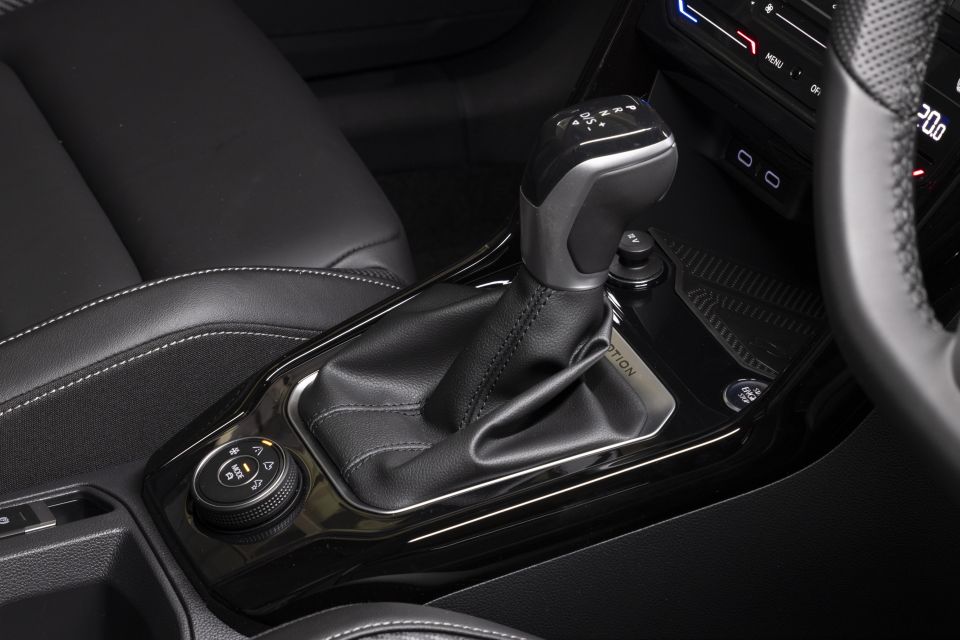
The brand’s local arm has previously blamed our lack of emissions regulations and fuel quality for not bringing the more advanced powertrain, as well as a concern the base T-Roc’s buyers are more likely to fill their vehicles with a lower-octane fuel – potentially causing costly damage to the standard petrol particulate filter (PPF), which the older 1.4 TSI does without.
Meanwhile, the T-Roc R-Line gets the same 2.0-litre turbo petrol as the outgoing 140TSI Sport, with outputs rated at 140kW (4200-6000rpm) and 320Nm (1450-4200rpm). Drive in the R-Line is sent to a 4Motion all-wheel drive system via a seven-speed DSG dual-clutch auto.
Like the 1.4 TSI in the Style, the 2.0 TSI in the T-Roc R-Line is EU6-certified, features idle stop/start and brake energy recuperation, and doesn’t feature a petrol particulate filter (PPF).
Volkswagen says the 140kW T-Roc will hit 100km/h from a standstill in 7.2 seconds, and use 7.3L/100km on the combined cycle. Emissions are rated at 167g/km and the fuel tank is slightly larger at 55 litres.
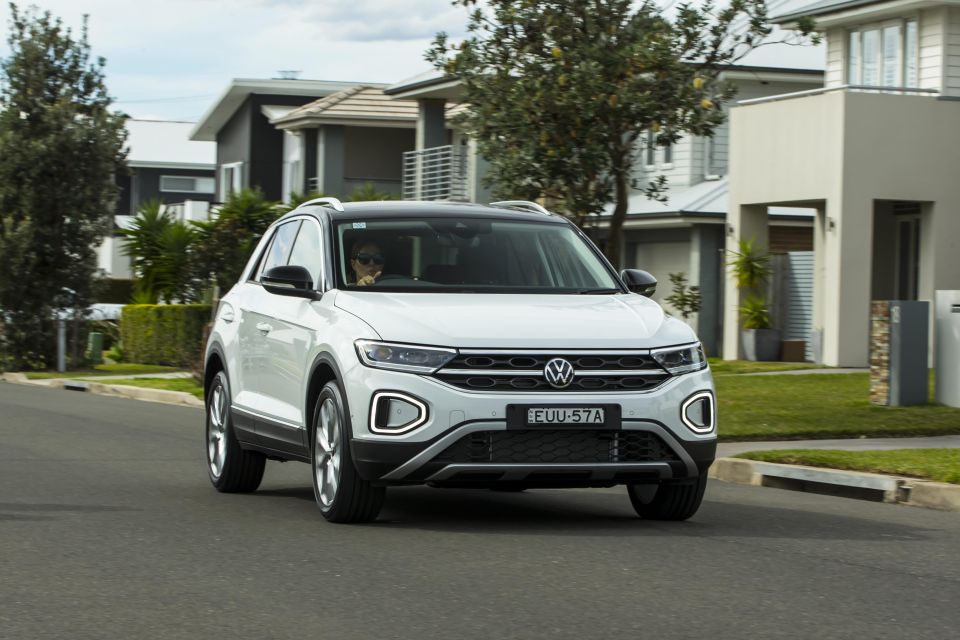
We drove the Style and then the R-Line back-to-back on a mix of city, suburban and country roads, which offered a mix of speed limits, road surfaces undulations and the like.
Fresh out of Canberra’s airport I took off in the T-Roc Style, which is very well suited for the city and suburban streets in the first leg of the journey.
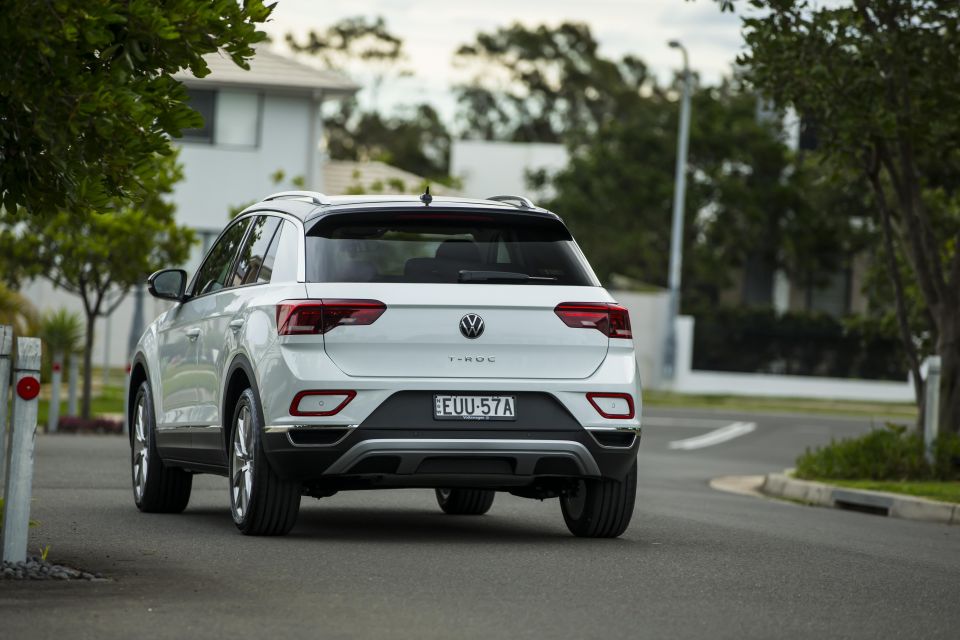
While 110kW and 250Nm don’t seem like huge numbers, having peak torque from just 1500rpm means even the base T-Roc feels zippy off the line, and the eight-speed automatic generally shifts quickly and intuitively.
On a couple of occasions setting off from traffic lights, I found the eight-speeder was a little slow to engage after the T-Roc’s idle stop/start system fired the engine back up, something that you think would be addressed by ditching the DSG.
The 1.4 TSI has a gravelly note to it, and feels willing under heavier throttle inputs. Even when you’re really gunning it, it’s quite refined and nowhere near as thrashy as some rivals, though it’s best driven in a measured manner.
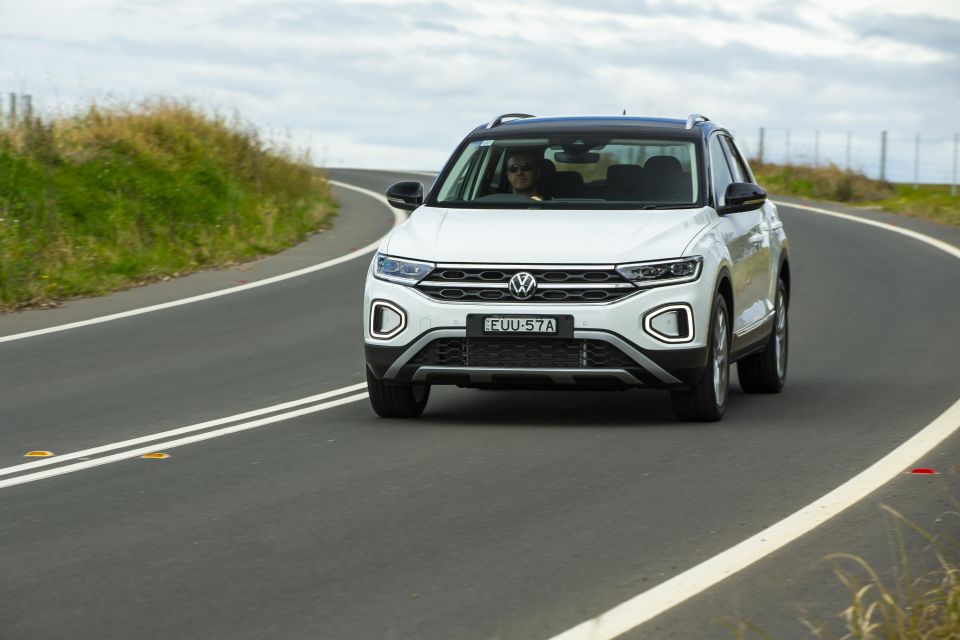
Where expert car reviews meet expert car buying – CarExpert gives you trusted advice, personalised service and real savings on your next new car.
I was quite impressed by the Style’s ride comfort and cabin refinement in town and on the highway, with a passively-damped suspension tune that balances comfort and dynamics well. The cabin is well insulated from road and wind noise, even on the pimpled coarse-chip country highways we encountered as we left Canberra’s city limits.
The driver controls are light but accurate, and the T-Roc really does feel like a jacked-up Golf in most ways. For most people, the Style will do everything you want and then some, unless you need all-paw traction and a bit more go.
I was following other journalists driving T-Roc R-Lines and the Style did an admirable job in keeping up through some winding, undulating B-roads. It holds on admirably in bends and there’s decent punch from the little engine, only running out of puff on steeper inclines.
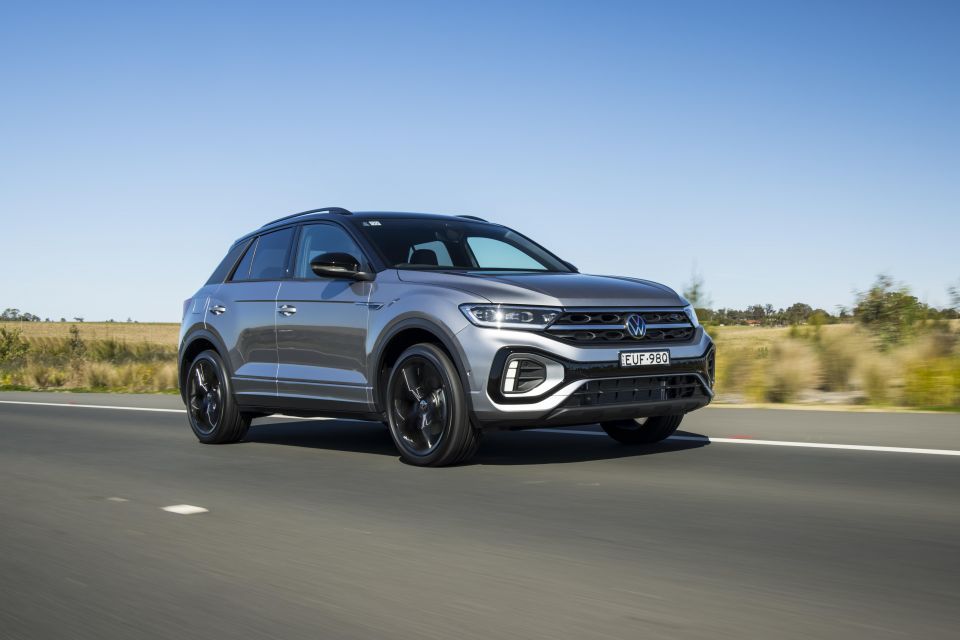
From there we jumped into the R-Line, and you notice a few differences right away.
The 2.0 TSI’s extra grunt and snappy seven-speed DSG auto feel notably sportier from the moment you get going, while the larger wheel and tyre package – all the vehicles on test were optioned with the bigger wheels and adaptive dampers – feel a little firmer particularly in the car’s Normal setting.
Give it some beans and the T-Roc R-Line has an almost GTI-esque soundtrack to it, and the Adaptive Chassis Control (incl. dampers) coupled with the steering-mounted paddle-shifters mean you can actually drive this little crossover like a hot hatch.
The R-Line feels a little better sorted at the rear over bumps, particularly in its softest Comfort setting, likely thanks to the multi-link rear suspension it picks up over the Style’s standard torsion beam rear.
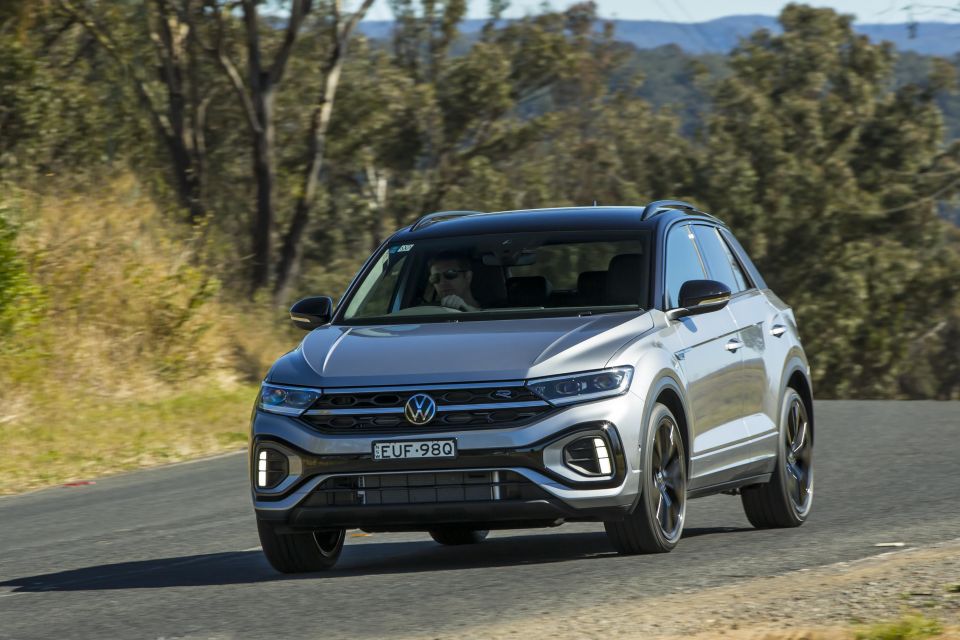
I was impressed with the T-Roc R-Line’s performance on the same twisty bits we took the Style through, cornering with accuracy and limited body roll in its sportiest drive mode. Were there no T-Roc R with this updated range, the R-Line would be a pretty compelling driver’s pick in the compact crossover class.
The added grunt (140kW/320Nm) gives you a harder shove in the back, and the 4Motion all-wheel drive systems lends added confidence to get on the power out of corner sooner.
In adverse weather (which we didn’t encounter on the launch), the R-Line’s AWD system would also help get the power down more securely – we did spin up the wheels off the line in the Style with harder throttle, which is to be expected.
What wasn’t so great was the R-Line’s road noise on the optional 19-inch alloys and 225/40 Bridgestone Potenza S001 tyres – incidentally, the same rubber fitted to my Mk7.5 Golf GTI. Having just stepped out of the Style which was impressively hushed, the R-Line on 19s was loud and echoey.
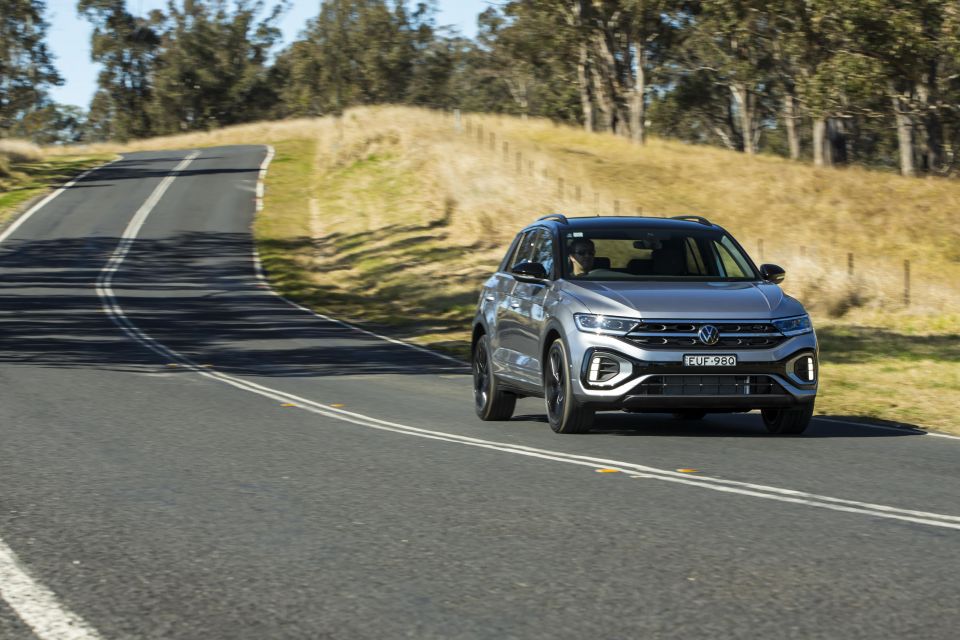
I’d be interested to get a steer of the R-Line’s standard 18-inch wheel and tyre package with passive sport suspension to see how different it will feel, but from memory of the pre-facelift model the standard running gear should strike a pretty good balance between comfort and dynamics.
The new T-Roc picks up Volkswagen’s handy Travel Assist feature as standard, which combines adaptive cruise and lane centring functions for semi-autonomous highway driving. It’s one of the better systems of its type, and proved to be a good inclusion when navigating Canberra’s freeways.
Worth noting again, however, is the fact the T-Roc Style and R-Line will lose Side Assist (blind-spot monitoring) and Rear Traffic Alert for the 2023 model-year, meaning these handy features won’t be available for new builds.
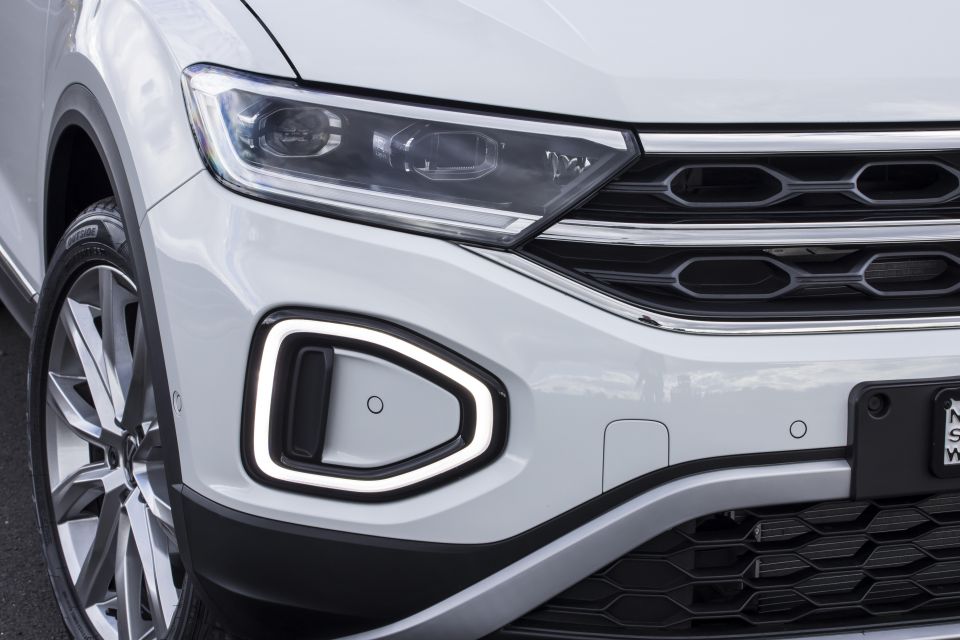

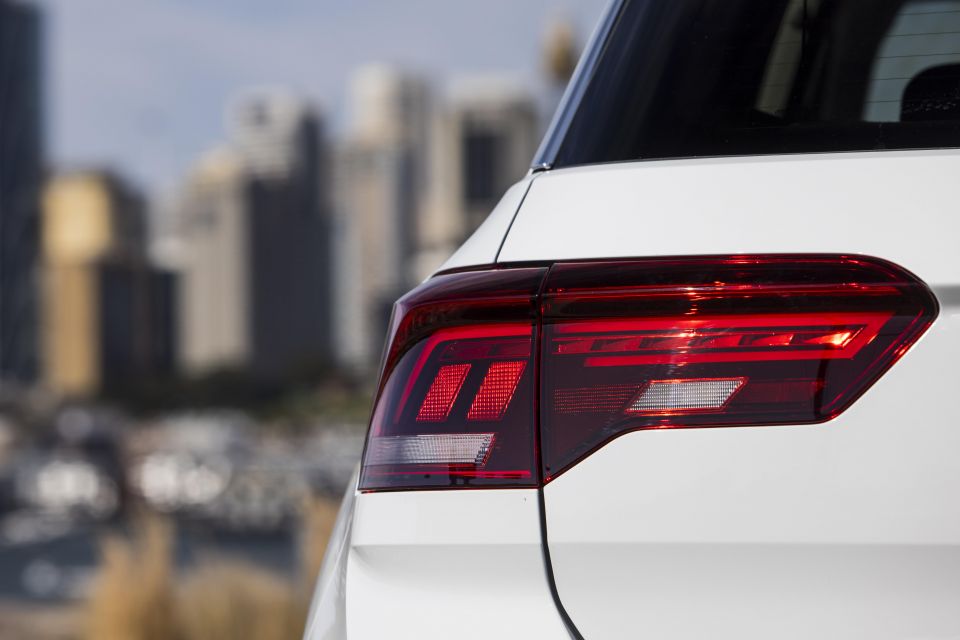

T-Roc Style highlights:
T-Roc R-Line adds:
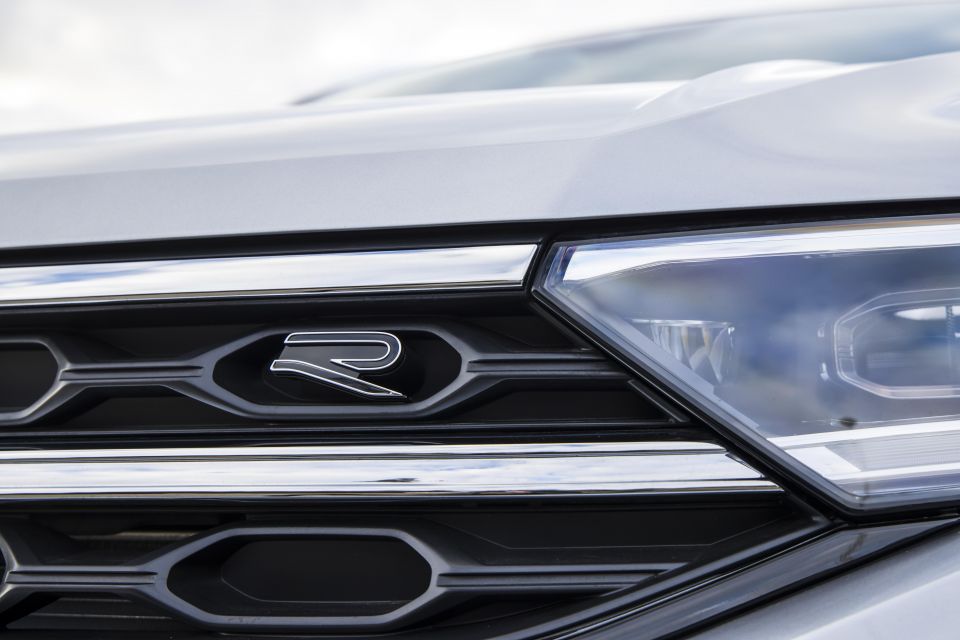
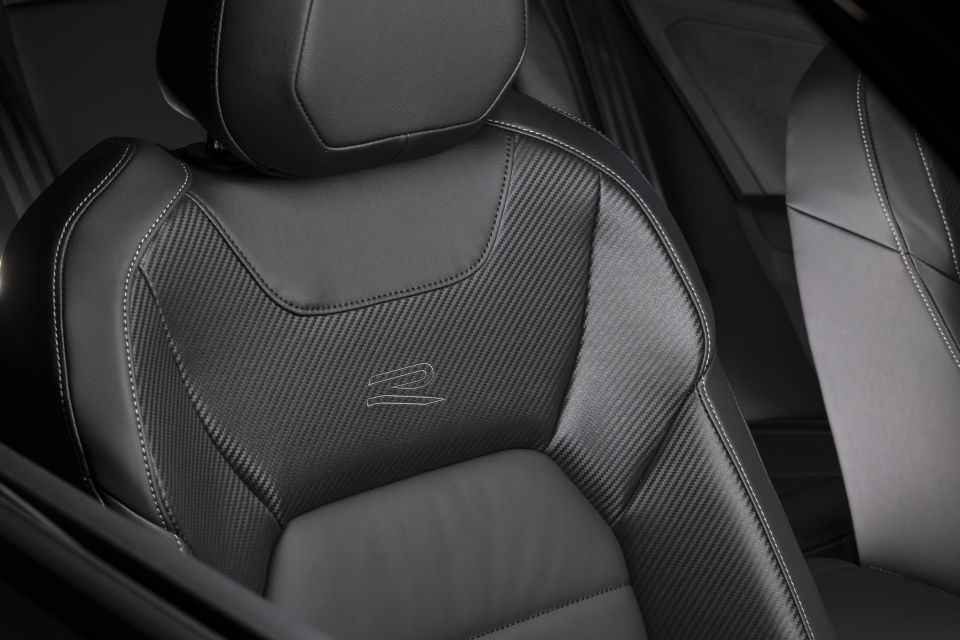


Sound & Vision package (Style): $2000
Black Style package (R-Line): $2900
Leather package: $3450 Style / $3950 R-Line
Electric tailgate: $600 Panoramic glass sunroof: $2000
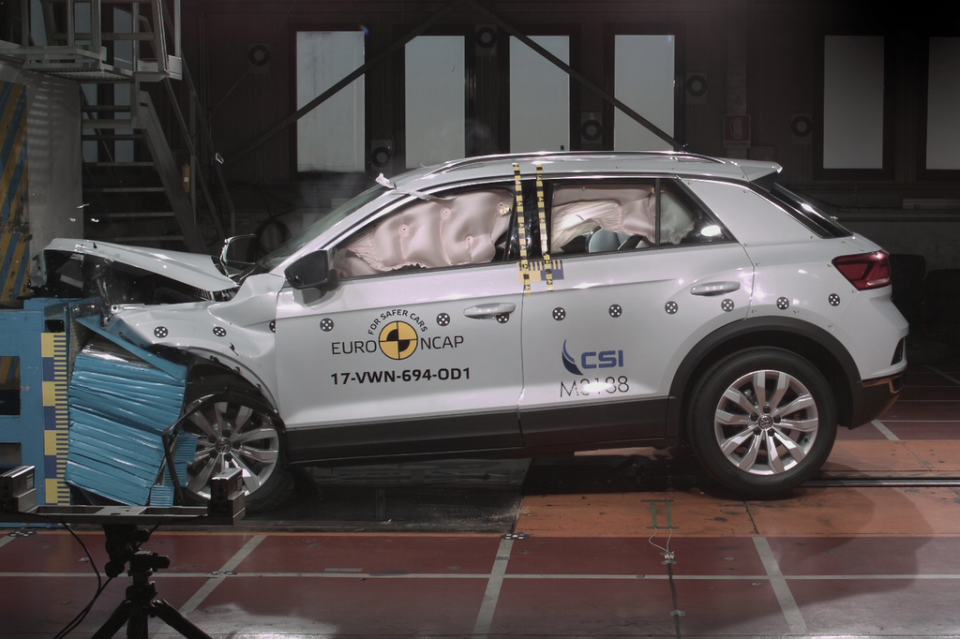
The T-Roc wears a five-star ANCAP safety rating based on tests conducted by Euro NCAP in 2017.
It received an adult occupant protection score of 96 per cent, a child occupant protection score of 87 per cent, a pedestrian protection score of 79 per cent, and a safety assist score of 71 per cent.
Standard safety features include:
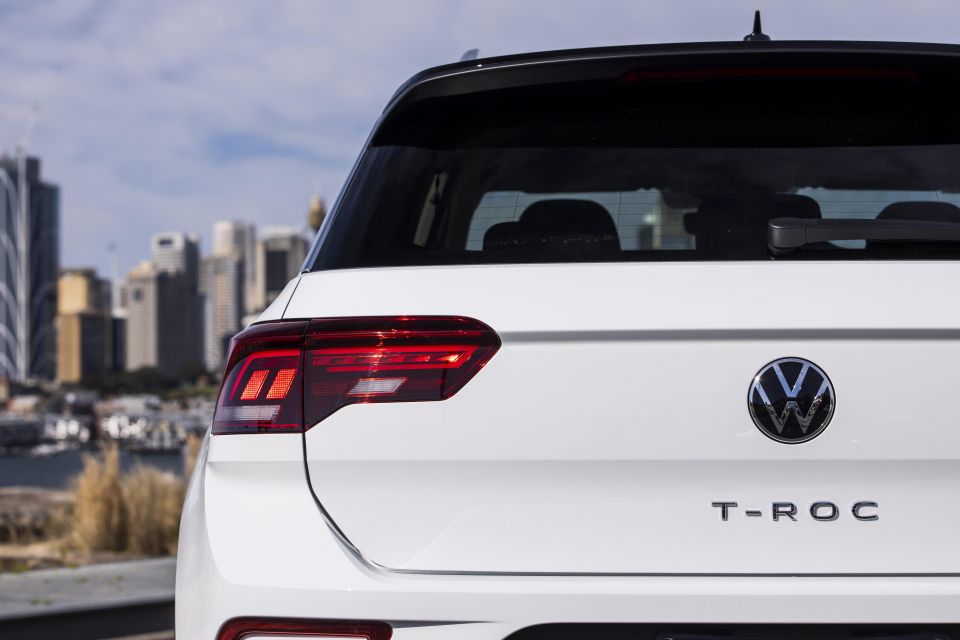
The T-Roc, like all new Volkswagen models, is covered by a five-year, unlimited-kilometre warranty.
Scheduled maintenance is required every 12 months or 15,000 kilometres – whichever comes first.
Volkswagen offers three- and five-year Care Plans for all versions of the T-Roc, costing $1350/$2250 for the Style, and $1550/$2600 for the R-Line.
Our dynamic-leaning test route for both models wasn’t really indicative of real-world conditions, but we saw high sevens and low eights (indicated) in both the 1.4 TSI and 2.0 TSI models.
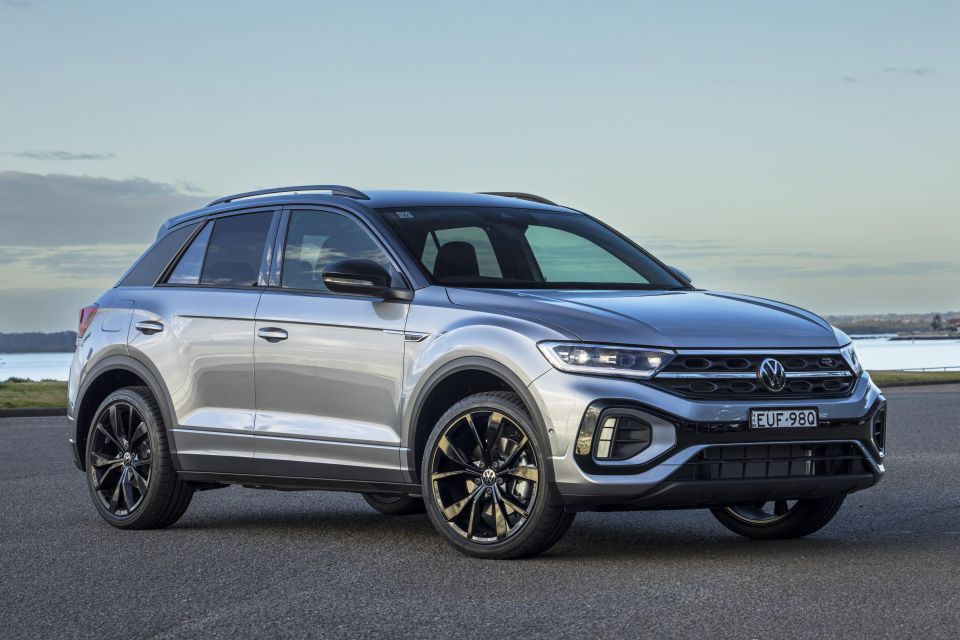
The updated T-Roc leaves a good impression, and Volkswagen should be praised for addressing key areas of improvement of the original model.
A nicer cabin, better technology and a wide range of personalisation options mean you can really tailor the T-Roc to your tastes, something that’s becoming increasingly rare in the mainstream classes.
With that said, ticking lots of options boxes can get pricey, to the point where a fully-optioned R-Line is over $60,000 drive-away – almost T-Roc R money. That also puts the little German crossover in price brackets where you can get premium alternatives like the Audi Q2, Audi Q3, Lexus UX and Volvo XC40.
My ideal T-Roc would be a Style with the 140kW 2.0 TSI 4Motion drivetrain, but alas that’s not available here. A Style optioned with the Sound and Vision package, or the R-Line with the Leather package would be my picks.
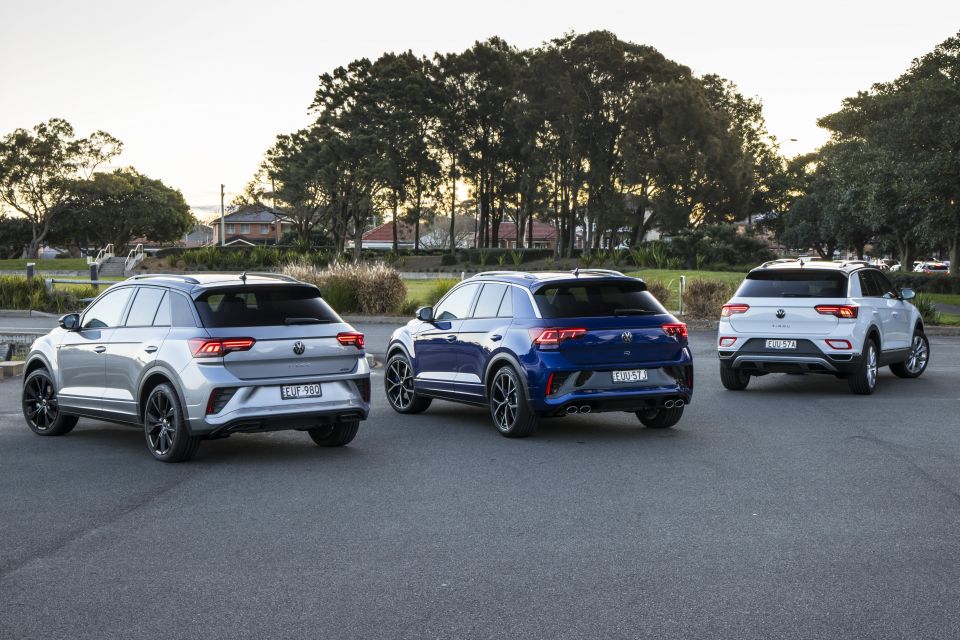
Click the images for the full gallery
Where expert car reviews meet expert car buying – CarExpert gives you trusted advice, personalised service and real savings on your next new car.
James is an automotive journalist based in Melbourne, Australia. Before joining CarExpert.com.au in 2020, James has worked at leading auto media outlets including Carsales and CarAdvice, as well as at Pulse agency for Ford Australia's communications team. In 2019 James made Mumbrella's 'Top 20 most prolific web authors in Australia' list after publishing 1,360 articles between March 1, 2018 and February 28, 2019 for CarAdvice. James is also an Ambassador for Drive Against Depression – an Australian charity whose mission is to support mental wellness through the freedom of driving and a shared love of cars.


Andrew Maclean
1 Month Ago


Josh Nevett
29 Days Ago


Matt Campbell
23 Days Ago
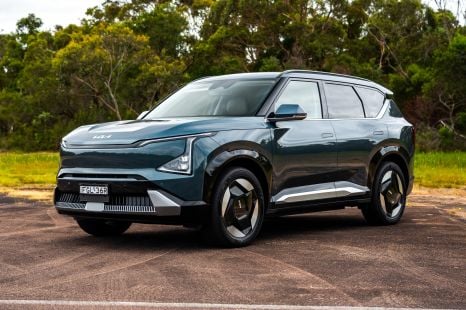

James Wong
16 Days Ago


CarExpert.com.au
9 Days Ago
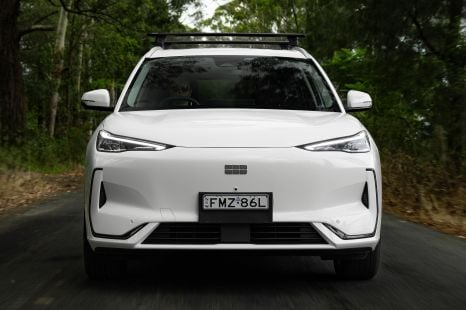

William Stopford
8 Days Ago